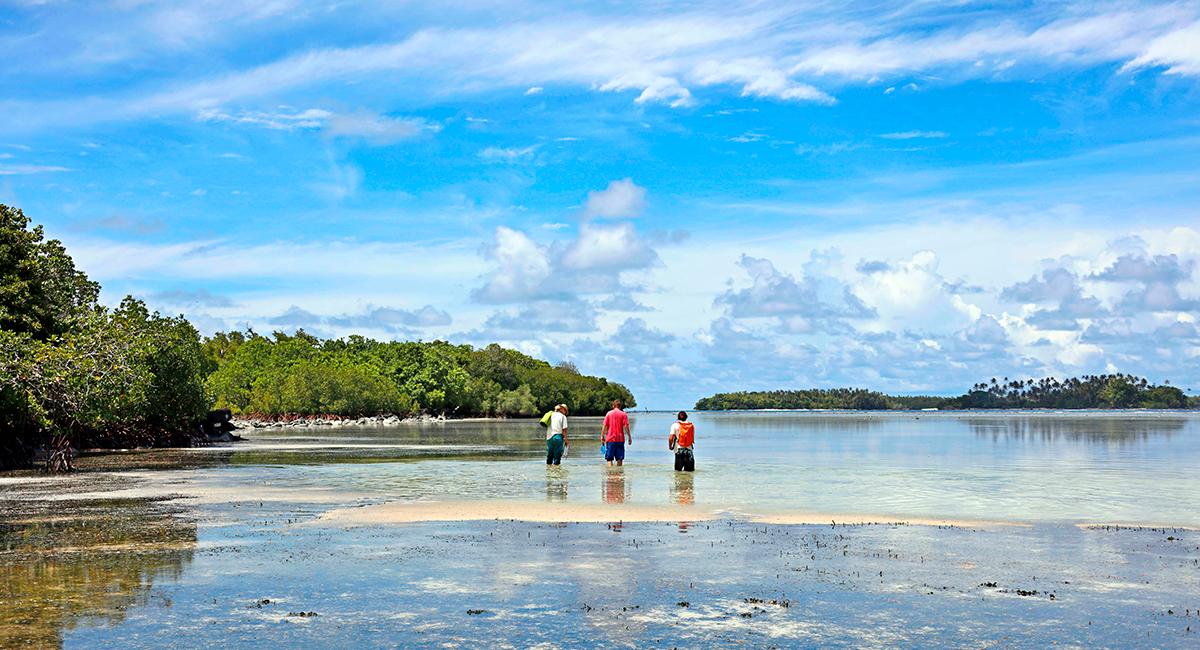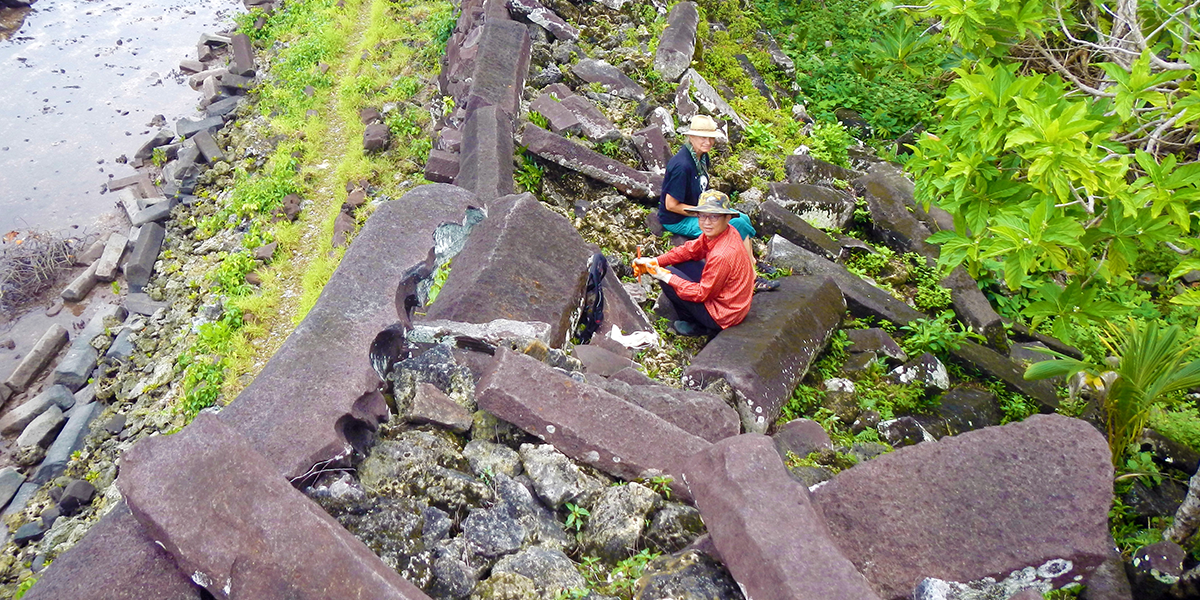
A conceptual illustration of a reconstructed Nan Madol.
On the eastern coast of Pohnpei Island, Micronesia, lie the abandoned ruins of Nan Madol, the ancient capital of the Saudeleur Dynasty. Known as the “Venice of the Pacific,” this floating city comprised over 100 artificial islets constructed from nearly a million tons of columnar basalt and coral rubble, spanning approximately 18 square kilometers. While the exact timeline and environmental factors affecting its development were previously unclear, a recent study has shed light on the site’s tragic history.
An international research team led by MOE National Chair Professor Chuan-Chou Shen of NTU’s Department of Geosciences has analyzed coral rubble samples from Nan Madol to disclose its history. The team found that subsidence-induced sea level rise and climate change had severely impacted the city’s construction and upkeep, ultimately contributing to the collapse of the Saudeleur Dynasty and the abandonment of Nan Madol. These findings, published in PNAS Nexus on October 1, 2024, and highlighted by Science on October 25, serve as a cautionary tale, especially for island nations facing similar climate threats today.
The study reveals two main construction phases at Nan Madol: the 10th-12th century marked the rise of the Saudeleur Dynasty, while the late 12th to early 15th century saw the dynasty’s decline. These phases are centuries earlier than previously believed. Formed by volcanic activity, Pohnpei Island has gradually cooled, causing the landmass to contract and sink by about 1 millimeter annually, leading to a relative rise in sea level. By the second construction phase, almost all Nan Madol compounds were already below average sea level. This ruin endured severe climate fluctuations for over a century, especially during La Niña periods, which brought powerful easterly winds and elevated sea levels. These pressures induced frequent seawater surges that damaged structures, making maintenance a significant challenge. Eventually, public discontent culminated in the overthrow of the dynasty, and Nan Madol was left to decay.
Today, this story of Nan Madol serves as a stark warning. With ongoing climate oscillations in the Pacific and Indian Oceans, coupled with global warming-induced sea level rise, more islands worldwide are at risk of submersion, potentially leading to a significant increase in climate refugees in the coming decades. Curbing global warming to prevent such tragedies is an urgent priority.
Abandoned ruin of Nan Madol

(A) Location of Pohnpei, the third-largest island in Micronesia.
(B) Map of Pohnpei indicating the site of Nan Madol, the capital of the Saudeleur Dynasty.
(C) Aerial view of Nan Madol.
(D) Northeastern corner of the outer wall of the Royal Tomb Complex (4–6 m in height, marked by the black arrow in C).
(E) Central stone chamber where Saudeleur chiefs were interred.

Researchers conducting surveys and sampling at the site of Nan Madol.

Dr. Chuan-Chou Shen from the Department of Geosciences, National Taiwan University (front), and Dr. Felicia Beardsley, an archaeologist from the University of La Verne (back), collecting coral samples from the outer wall of the Royal Tomb Complex.

Researchers at the HISPEC Laboratory, Department of Geosciences, National Taiwan University, preparing coral subsamples for uranium-thorium dating.


